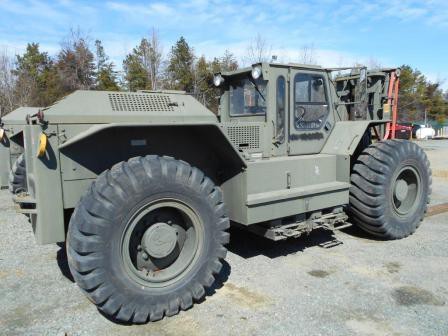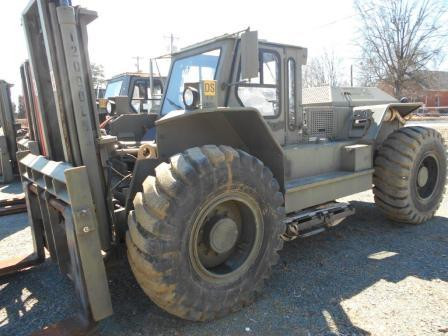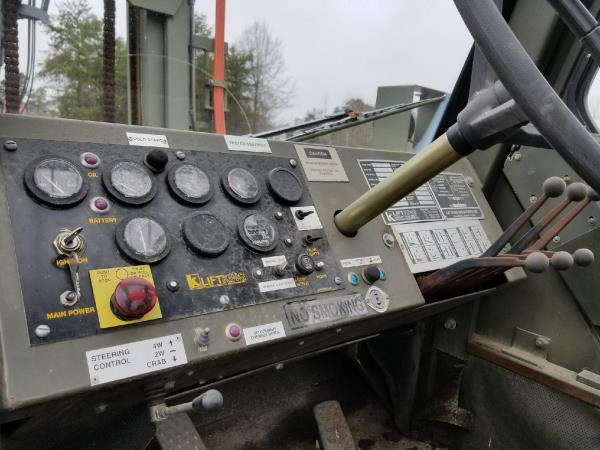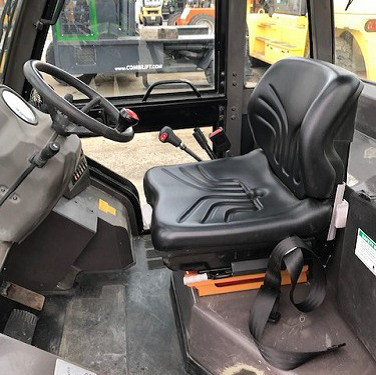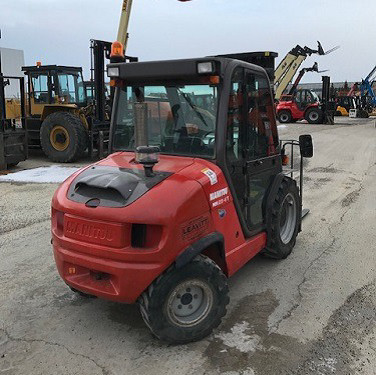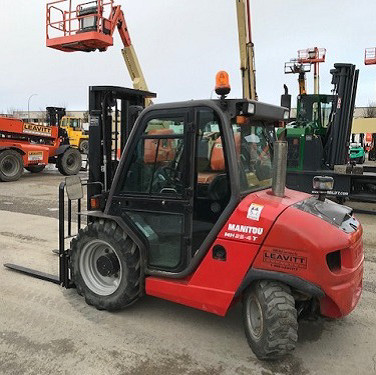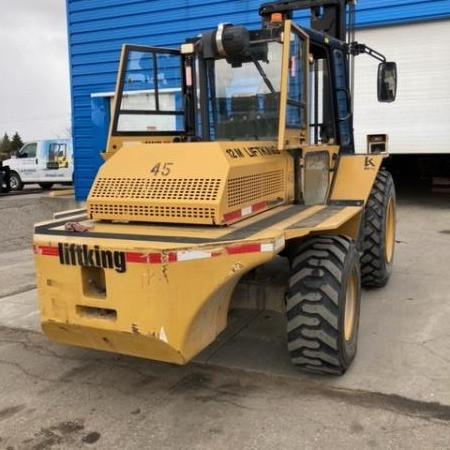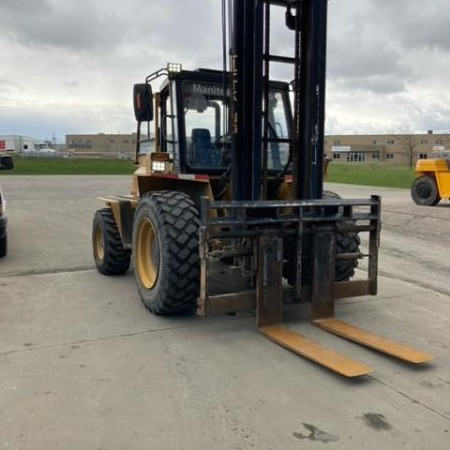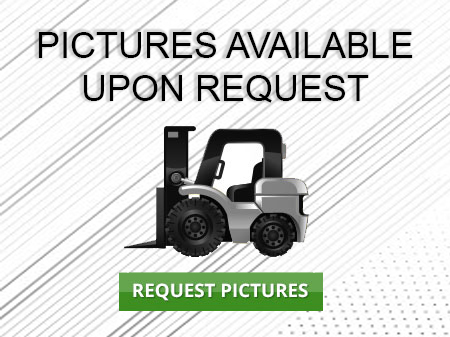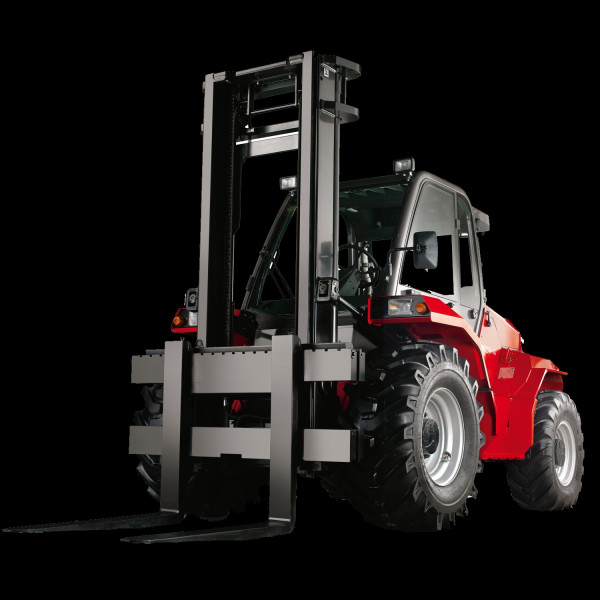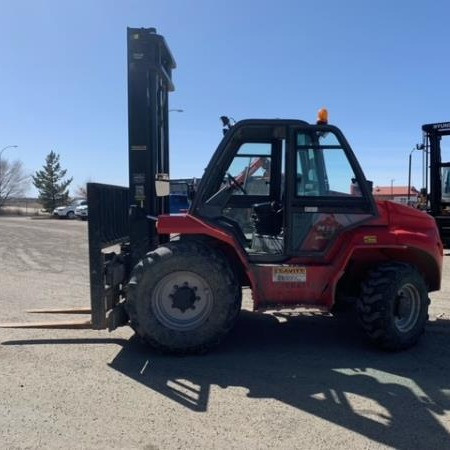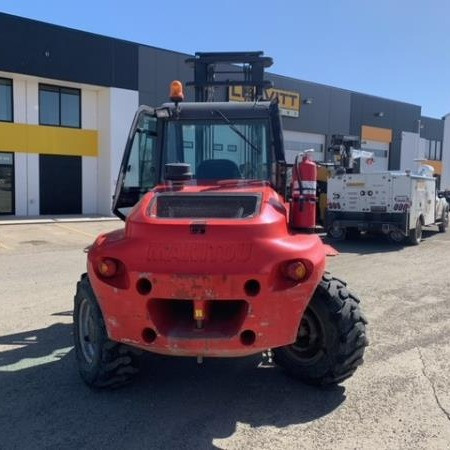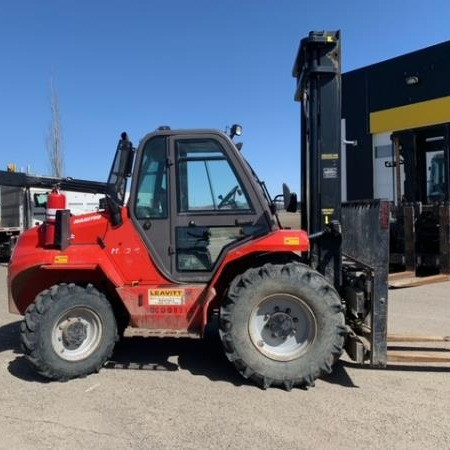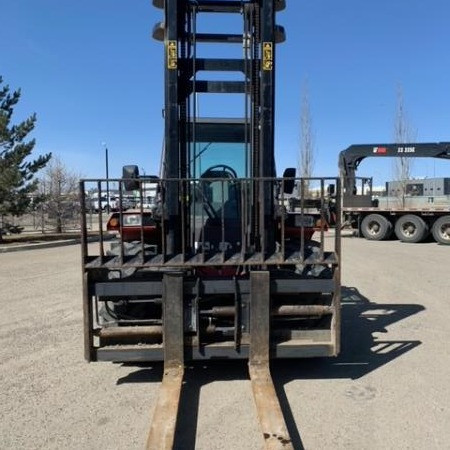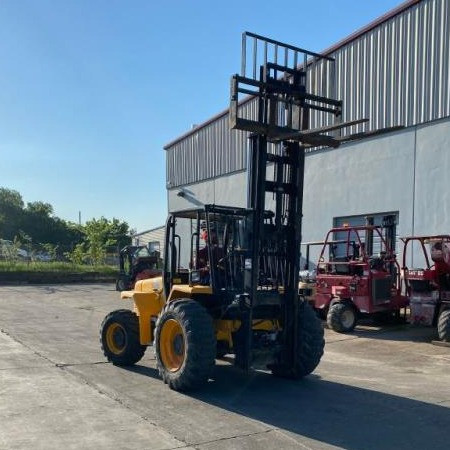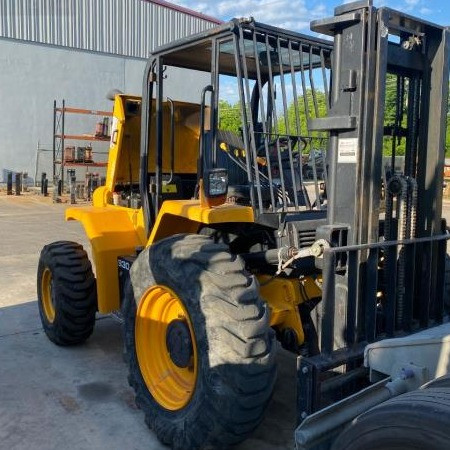Rough Terrain Forklift Corona
Used Rough Terrain Forklift Corona - Forklifts rely on two forks to unload, load and transport items. The rough terrain forklift and the industrial forklift are the two main types of forklift trucks.
The first category of forklifts, industrial forklifts, are mostly used in warehouses and at loading docks on surfaces that are relatively smooth and level. Rough terrain forklifts are better suited for rocky environments and uneven surfaces. Rough terrain forklifts are often seen at construction sites and outdoors. They have the weight capacity, size and tires to handle heavy loads. The main difference between industrial and rough terrain forklifts is that industrial forklifts are fitted with cushion tires, a common, over-the-road type tire. Pneumatic tires are utilized by rough terrain models. They are similar to tractor tires that offer more traction and flotation. Internal combustion engines can power industrial forklifts; however, more often they rely on an electrical source such as a fuel cell or better. Rough terrain models typically rely on an internal combustion engine.
Types of Class 7 Rough Terrain Forklift Trucks
There are three main kinds of Class 7 Rough Terrain Forklift Trucks. The rotating telehandler forklift, straight mast forklifts and rotating forklifts are in this category.
Regardless of its type, all rough terrain forklift trucks are designed to handle, as their name suggests, natural rough terrain and disturbed rough terrain typical of construction and military sites. A rough terrain forklift also offers increased maneuverability and performance. Additional consideration needs to be given for rough terrain forklift options while raising loads in difficult conditions in order to stay safe from tipping over. As with all forklift operation, the machine must be in a position to remain stable before lifting, transporting or lowering a load. Adequate stability and proper lifting techniques need to be implemented to keep the forklift stable on the ground.
Straight Mast Forklifts
Designed to facilitate safe transport along difficult terrain such as demolition sites and construction locations, straight mast forklifts can complete the job safely and efficiently. Pneumatic cushion tires allow this forklift better maneuverability and accessibility around difficult terrain. These allow the forklift truck to easily travel over rough terrain on the worksite. Most straight mast forklift units have 2WD or 4WD configurations. Most straight mast forklifts are powered by diesel or propane fuel, allowing them to be used indoors for short periods but are more suited to outdoor applications. Straight mast forklifts have a similar lift capacity compared to standard forklift models; ranging from 5K to 36K lbs.
Telehandler or Telescopic Handler Forklifts
Telehandler or telescopic handler forklift trucks are equipped with a telescoping boom, giving them their name. This specially designed boom allows the forklift truck to pick up loads and place them at differing heights in front of the unit. Better reachability delivers greater flexibility to the forklift operator while placing loads.
Standard telehandler forklift units are long and low. They are designed with two wheels located at the front of the forklift with a different pair of wheels found close to the end of the unit. A telescopic boom is mounted at the rear of the forklift on a pivot that is fixed several feet higher than the forklift frame. The left side of the machine houses the cab and the hydraulic fluid tank and the fuel tank are found opposite to the cab. Along the center of the machine, the engine and transmission can be found inside the frame. This popular design showcases a balanced forklift which is ideal for the machine’s stability with lifting, moving and lowering items.
Compared to standard forklifts, telehandlers deliver higher lift heights. High-reach telehandlers can extend their full load capacity to 56 feet. The compact telehandlers can extend their full load capacity from 18 feet. Load capacities are between 5K to 12K pounds.
All-wheel steering is popular for all-terrain forklifts and provides increased maneuverability. This, along with power shift transmission and other steering features, means that the operator can move the lift in as close proximity to the work area as possible.
Recent telehandler units showcase top-of-the-line ergonomic design to generate increased comfort and operator satisfaction. These features include tilted steering options and roomier cabs to increase operator comfort. Increasingly, these types of ergonomic features are in demand at worksites as they have been shown to improve productivity by decreasing operator repetitive stress injuries and operator fatigue.
A single joystick is a common design for most telehandlers. The joystick is responsible for the hydraulic system and the boom operations.
Non-marking tires are a feature that telehandler forklifts can benefit from by allowing these units to be utilized for maintenance on billboards and signs and on stadiums and buildings.
Rotating Telehandler or Roto Telescopic Handler Forklifts
Roto telescopic handler forklifts or rotating telehandlers have numerous items in common with the standard telehandler model. These include the rotating telehandler’s ability to lift heavy weight to great heights. However, these forklifts have the added ability to rotate the forklift on a turntable. The rotating function allows the forklift to swivel a full 360 degrees around, enabling access a much larger work area without having to reposition the forklift.
Because of this additional feature, rotating telehandlers often have a second joystick to allow operation of the rotation function apart from the lift function. Power-assist steering minimized slip differential on the rear axle for additional traction and four-wheel drive are some of the extra features offered on rotating telehandlers and standard telehandler models.
With the added rotating ability of these forklifts, comes additional safety considerations. Stabilizers are a rough terrain forklift feature that rotating telehandler models rely on to increase safety while handling rotating loads that are swinging back and forth from each side of the machine. Some rotating telehandlers do not have stabilizers. These units are created to move and work in various aspects of the job site and are easier to reposition without stabilizers.
Rotator telehandlers are usually smaller than their fixed cab counterparts, the standard telehandler. Therefore, rotator telehandler units can access smaller loads when compared to standard telehandler units. Ranging between four thousand and ten thousand pounds, rotating telehandlers can reach lift heights from 15 to 80 feet.
Both telehandlers and rotator telehandlers can be used as a crane when fitted with a winch attachment. These units can enable job sites that require a crane to get the job done without having to rent and transport a separate machine.
Advancements for Rough Terrain Forklifts
Many attachments are currently available for rough terrain forklifts, such as booms, winches, rotating fork carriages and articulating booms. More rough terrain forklift attachments will be unleashed onto the market in future years thanks to their ability to make the forklift more multi-purpose than ever before.
Most of the proposed advancements will consist of included safety features within the rough terrain forklifts. The latest safety upgrades include automatic load restriction and other features. By automatically weighing a load, these systems calculate the loads’ safe reach distance while taking the boom angle and its’ extension into account. If the safe reach distance is reached, an alarm will sound, warning the operator to make the proper adjustments to either the boom angle, the reach distance or load weight.
Rough Terrain Forklift PDF
Stock Number: 267846 GL
Make: Liftking
Model: LK12000
Year: 2003
| Stock Number |
267846 GL |
| Make |
Liftking |
| Model |
LK12000 |
| Year |
2003 |
| Category |
Rough Terrain Forklift |
Stock Number: DP-MAN008 GL
Make: MANITOU
Model: MH25-4T
Year: 2016
| Stock Number |
DP-MAN008 GL |
| Make |
MANITOU |
| Model |
MH25-4T |
| Year |
2016 |
| Category |
Rough Terrain Forklift |
Stock Number: 209058 GL
Make: LIFTKING
Model: LK12M42
Year: 2015
| Stock Number |
209058 GL |
| Make |
LIFTKING |
| Model |
LK12M42 |
| Year |
2015 |
| Category |
Rough Terrain Forklift |
Stock Number: 208325 GL
Make: MANITOU
Model: M50.4
Year: 2015
| Stock Number |
208325 GL |
| Make |
MANITOU |
| Model |
M50.4 |
| Year |
2015 |
| Category |
Rough Terrain Forklift |
Stock Number: EQC008213 GL
Make: MANITOU
Model: M50
Year: 2017
| Stock Number |
EQC008213 GL |
| Make |
MANITOU |
| Model |
M50 |
| Year |
2017 |
| Category |
Rough Terrain Forklift |
Stock Number: LS15257 GL
Make: JCB
Model: 930
Year: 2013
| Stock Number |
LS15257 GL |
| Make |
JCB |
| Model |
930 |
| Year |
2013 |
| Category |
Rough Terrain Forklift |




